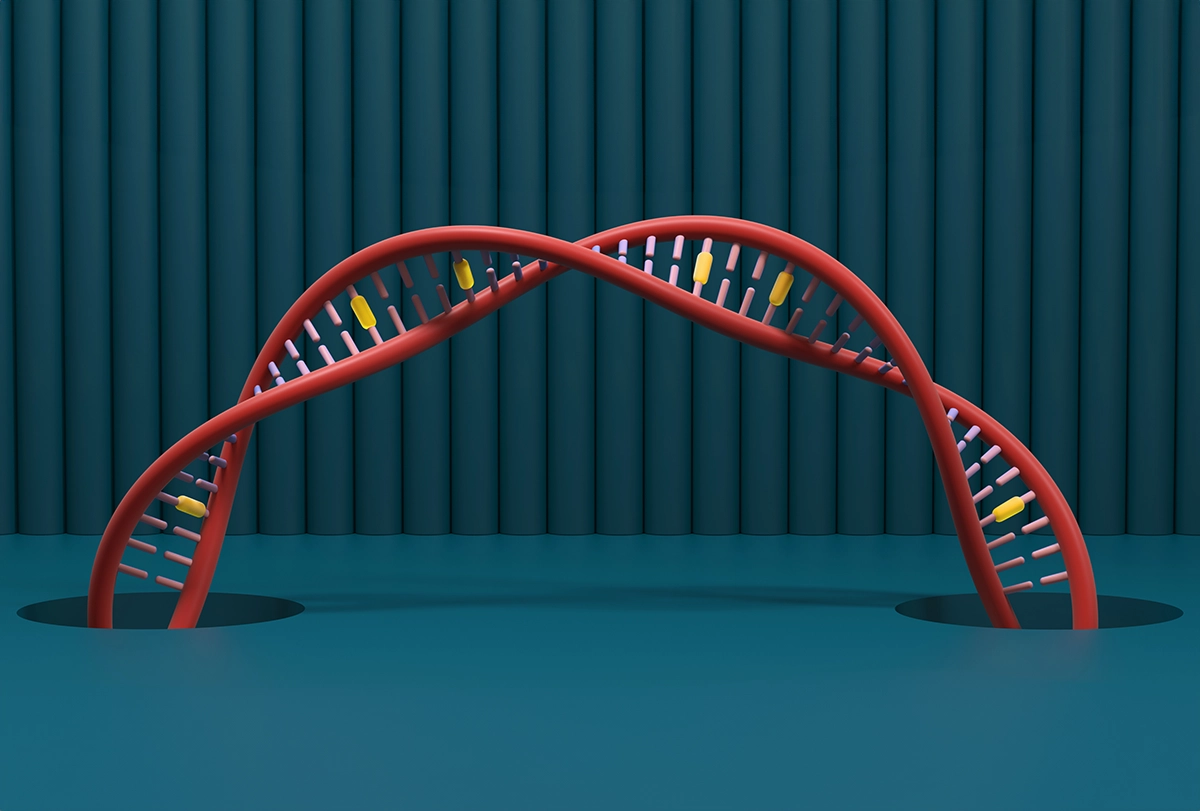Autism is linked to the presence of spontaneous—or de novo—variants in promoters, regions of the genome that initiate the transcription of DNA into RNA. In autistic people, these variants tend to be located in chromosomal neighborhoods that contain other autism-linked genes, a new study shows.
The work also suggests that the variants can contribute to autism through their effects on the 3D organization of the genome.
That idea could be groundbreaking—provided it is validated by further investigation, says Nadav Ahituv, professor of bioengineering and therapeutic sciences at the University of California, San Francisco, who was not involved in the study. “I’m looking forward to functional characterizations of this [phenomenon] that show that it is really happening at a larger scale and in other conditions.”
Chromosomes are composed of 3D structures in which otherwise distant DNA sequences can come in close proximity and interact with each other. These structures, called topologically associating domains (TADs), bring stretches of regulatory DNA near their target genes.
Variants that disrupt the boundaries between different TADs are associated with neurodevelopmental conditions, says study investigator Atsushi Takata, who leads the Laboratory for Molecular Pathology of Psychiatric Disorders at the RIKEN Center for Brain Science. But Takata’s new study is the first to show that promoter variants may contribute to autism by altering the organization of TADs.
T
he researchers analyzed the whole-genome sequences of almost 5,000 people with autism, their non-autistic siblings and their parents. The samples were part of the Simons Simplex Collection and the SPARK research cohort, both of which are funded by the Simons Foundation, The Transmitter’s parent organization.Promoter regions that are preserved across species show more de novo variants in autistic children than in their non-autistic siblings, a 2018 study found. But that is not the case for promoters upstream of autism-linked genes, Takata and his colleagues found.
“It was surprising to see that there is no enrichment of promoter de novo variants in autism genes,” because promoters typically control the expression of nearby genes, Takata says.
Instead, variants in promoters located within TADs that contain autism-linked genes occur more frequently in autistic people than in their non-autistic siblings, the team found.
Introducing one of these variants in human induced pluripotent stem cells altered the expression of several genes in the same TAD, including autism-linked genes such as DGCR8. That particular gene is essential for the synthesis of short RNA fragments that regulate gene expression, and it lies within 22q11.2, a genomic region that is lacking in people with an autism-related condition called 22q11.2 deletion syndrome. The study was published in February in Cell Genomics.
The observed effects of these promoter variants raise many possibilities for further study. For example, assessing the location and effects of promoter variants in human-specific TADs “would be very interesting,” Ahituv says.
Past work by Ahituv and his colleagues suggested that disruptions of TAD boundaries conserved across evolution are associated with altered development. Deleting a human-specific boundary near the autism-related AUTS2 gene boosts its expression in neurons, they also found.
Understanding how promoter variants influence genome structure could improve clinical diagnostics and point to therapeutic strategies that involve rearranging the genome to change the expression of autism-associated genes, Takata says. Analyzing how other types of noncoding variants influence genes within the same TAD may also reveal previously unidentified genetic factors associated with autism, he adds.
T
he work raises several questions for future studies to explore. “It’d be very interesting to know what else is different between TAD regions that do and do not contain ASD genes,” says Elise Robinson, assistant professor of epidemiology at Harvard University, who was not involved in the research.Robinson and her team have shown that common and rare mutations in a chromosomal region associated with autism contribute to similar effects on gene expression—likely because of the 3D architecture of the region, which creates opportunities for contact among multiple stretches of DNA.
How the 3D architecture of the genome and the interactions within TADs influence gene expression remains unclear, Robinson says. “But I’m excited by the accumulating evidence for the importance of considering, at the genome-wide level, the relevance of contact structure and regulatory architecture.”






